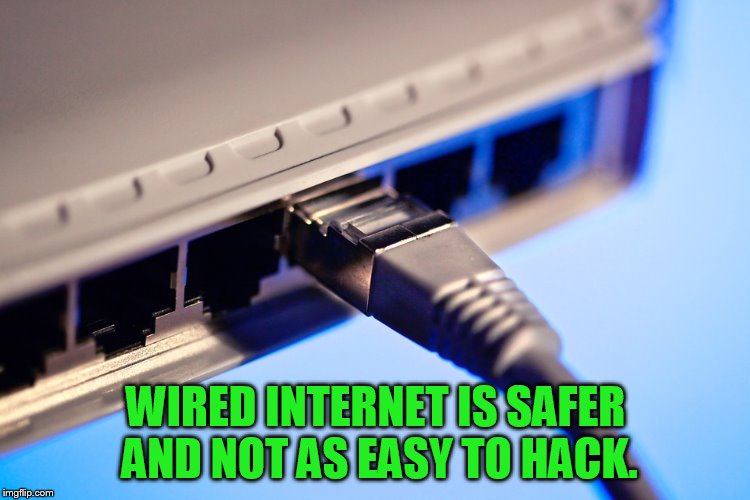 By B.N. Frank
By B.N. Frank
A 2020 lawsuit against the Federal Communications Commission (FCC) determined that Americans have already paid to have access to safer and more secure high-speed internet access via fiber optics to the premises and copper landlines (see 1, 2). Nevertheless, taxpayer money has continued to be given to telecom and cable companies to “bridge the digital divide” with less secure (see 1, 2) and biologically harmful 5G and WiFi (see 1, 2, 3, 4). The Infrastructure Bill has been written to provide billions more as well.
From Gov Tech:
Breaking Down Broadband Funding in the Infrastructure Bill
After a long wait, the federal infrastructure bill is headed toward President Joe Biden’s desk. How can states and local areas take advantage of the $65 billion set aside for broadband? Here are some details.
November 08, 2021 •
Broadband deployment and adoption will receive a historic $65 billion boost once President Joe Biden signs the infrastructure bill passed by the U.S. House of Representatives Friday.
While experts doubt the money will take care of all of America’s broadband problems, a number of funding opportunities await states and local areas with connectivity projects.
Below is how the $65 billion breaks down by four major categories: deployment, emergency benefits, adoption and miscellaneous.
DEPLOYMENT
Roughly $42 billion will go toward the Broadband Equity, Access and Deployment Program, which will be managed by the National Telecommunications and Information Administration (NTIA). This program will offer competitive grants to states for:
- Broadband deployment in unserved and underserved communities.
- Connectivity at anchor institutions.
- Broadband data, maps and plans.
- Internet or Wi-Fi infrastructure or low-cost broadband for multifamily residential buildings.
- Broadband adoption.
- Other items deemed necessary by NTIA.
With these grants, states can only use up to 5 percent of funds for planning or predeployment items and only up to 2 percent for administration. Any subgrantee — which can be anything from a private provider to an electric cooperative to a public utility — must throw in a 25 percent match of the funding. Grants will be prioritized in the following order: unserved areas, underserved areas and anchor institutions.
Proposals will likely be due in 2022 once the Federal Communications Commission finishes updating its broadband maps. Proposed networks must offer a minimum download speed of 100 Mbps and a minimum upload speed of 20 Mbps. A low-cost broadband option must also be developed for eligible families, so every state must define “low cost.”
More in-depth details can be found here.
EMERGENCY BENEFITS
During the pandemic, a broadband subsidy called the Emergency Broadband Benefit Program was created. The infrastructure bill dedicates $14.2 billion to extending and expanding this program. Take note, however: The program will now only offer a $30 monthly subsidy to eligible households as opposed to $50, the original amount.
More details on this existing program can be found here.
ADOPTION
As part of a commitment to help make broadband Internet available to all citizens, the bill dedicates $2.75 billion to digital inclusion efforts.
Specifically, $1.5 billion will go to the State Digital Equity Capacity Grant Program. This money will be split into two pots: $60 million for states to create Digital Equity plans and $1.44 billion to assist with the implementation of such plans. In regard to the latter amount, this money is supposed to act as a supplement to state and local dollars.
Another $1.25 billion will fund the Digital Equity Competitive Grant Program. This money will not go to digital equity programs as defined by the State Digital Equity Capacity Grant Program mentioned above. Funds must be spent on items like digital inclusion activities, computer training, devices and public computing centers at anchor institutions.
More in-depth details can be found here.
MISCELLANEOUS
According to Ars Technica, $2 billion will go toward Rural Utilities Service grants offered by the U.S. Department of Agriculture; $2 billion will fund Tribal Broadband Connectivity Program grants; $1 billion will be available for middle-mile projects; and $600 million will support private equity bonds for broadband.
The FCC is supposed to protect Americans by regulating the telecom and cable industries. They have catered to them instead for decades (see 1, 2, 3) and this has led to numerous lawsuits. In fact, a few months ago a federal court ruled in favor of organizations and petitioners that claim the agency refuses to adequately protect Americans from biologically harmful cell phone and Wi-Fi exposure (see 1, 2, 3).
Earlier this year, scientists submitted a letter to President Biden asking him to protect the public from 5G and other unsafe technology. Instead he committed to adding more. Americans opposed to any or all of this may sign and share the following online petitions: 1, 2, 3.
Activist Post reports regularly about 5G, WiFi, and other unsafe technology. For more information visit our archives and the following websites.
- Americans for Responsible Technology
- 5GFree
- 5G Information
- 5G Space Appeal
- Stop 5G International
- WhatIs5G.info
- Wireless Information Network
- Electromagnetic Radiation Safety
- Environmental Health Trust
- Physicians for Safe Technology
- Scientists for Wired Tech
Become a Patron!
Or support us at SubscribeStar
Donate cryptocurrency HERE
Subscribe to Activist Post for truth, peace, and freedom news. Follow us on Telegram, HIVE, Flote, Minds, MeWe, Twitter, Gab and What Really Happened.
Provide, Protect and Profit from what’s coming! Get a free issue of Counter Markets today.

Be the first to comment on "Infrastructure Bill Provides $65B for Broadband Despite 2020 Lawsuit Decision That Americans Already Paid For High Speed Internet"